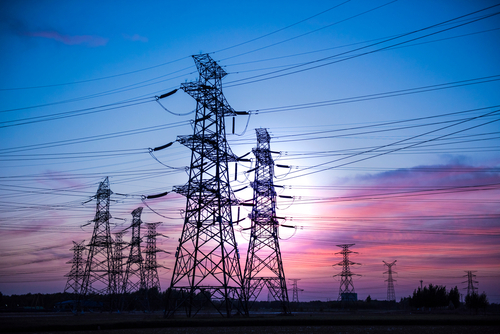ACORE, ACEG form Macro Grid Initiative to spur expansion and upgrade of US transmission network

The American Council on Renewable Energy (ACORE) and Americans for a Clean Energy Grid (ACEG) rallied behind efforts to expand and upgrade the nation’s transmission network this week, creating the Macro Grid Initiative to drive support.
The new organization is built on the notion that a modernized grid would bring jobs, spur economic development, alleviate congestion, cut emissions, and reduce costs. Aiding this would be improvements to reliability and efficiency since, the logic goes, upgrading would be a more cost-effective solution than starting from scratch.
Further bolstered by funding from clean energy supporter Breakthrough Energy, the Macro Grid Initiative will promote wide-ranging education about transmission expansion and why areas with low-cost renewables should be connected to centers of high electric demand.
“We need to improve America’s outdated and balkanized electricity transmission system both to compete effectively in the 21st-century economy and to properly tackle the climate crisis,” Gregory Wetstone, ACORE president and CEO, said. “A Macro Grid will allow for better integration of low-cost renewable energy, resulting in a more resilient, efficient grid and a dramatic reduction in carbon emissions.”
Fuelling this whole endeavor is the fact that renewable energy growth continues to expand by leaps, owing to increasingly competitive prices, rising demand, and revamped state energy programs. A big part of the Initiative will also be promoting connection of grid regions, such as MISO, PJM, and SPP.
“We believe every supporter of clean energy should be a supporter of a stronger backbone transmission grid,” Rob Gramlich, ACEG’s Executive Director, said. “Americans for a Clean Energy Grid looks forward to working with ACORE to explain to the public and policymakers why that is the case, and to build support for its development.”
All of this would require new policies at federal, regional, and state levels of government. However, the Initiative already has data on its side. A study by ScottMadden, Inc. and the nonprofit WIRES showed that enhanced transmission could facilitate increased electrification and guarantee a reliable grid amidst new patterns of electricity demand. A separate study, published in the scientific journal Nature Climate Change in 2016, estimated transmission development at the seams between regions could save consumers more than $47 billion and, with a nationwide network optimized for wind and solar sources, could provide as much as 80 percent carbon emission reductions by 2030 without adding costs.
